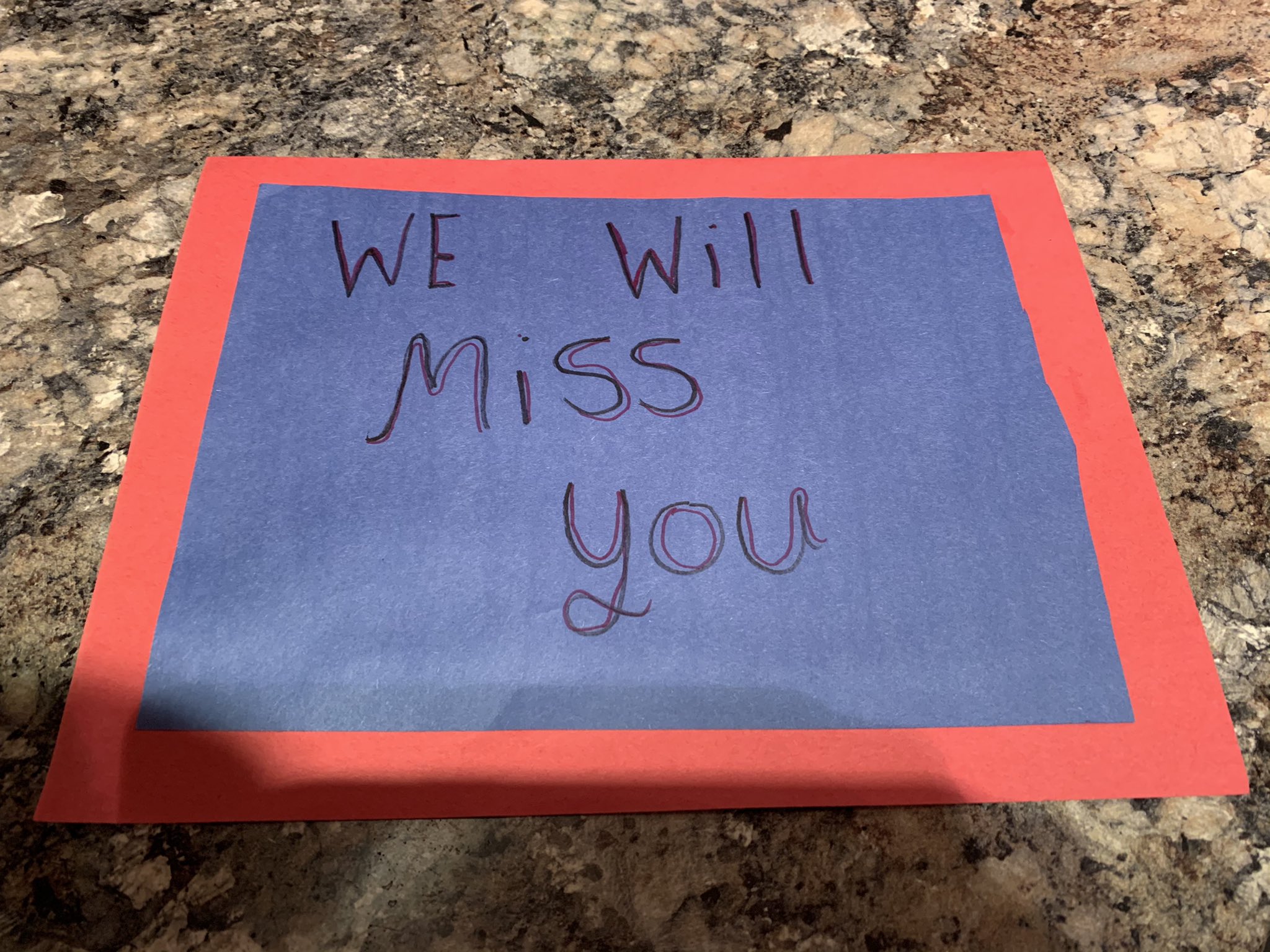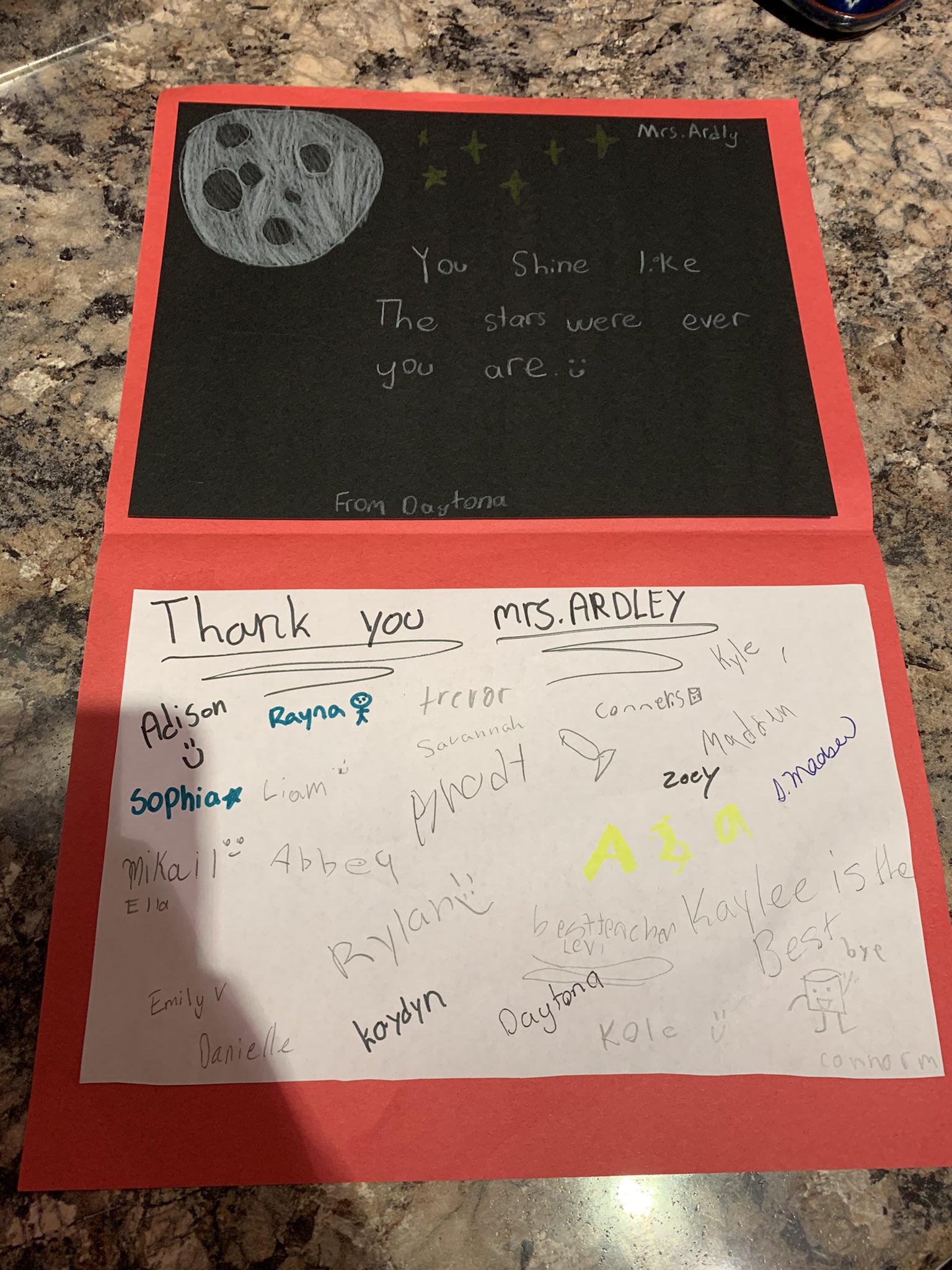My 490 Practicum Experience
For my four week practicum I was in a Grade 6/7 class. I’ll be honest, I was quite nervous when I saw that I was placed in a Grade 6/7 classroom because nearly all of my experience with children prior to this practicum had been with 6-7 year olds, not Grade 6/7 students. Although I was outside of my comfort zone, I went into my practicum with an open mind.
The first week was a bit difficult because I was not quite sure how to connect with students from that age range. I spent most of my time during the first week building a relationship with the students, as a class and one-on-one. I believe that having a good relationship with students is key to success in the classroom. Once our relationship was established I had a much easier time. Students would come to me for help or to just chat, they participated more in classroom discussions during the lessons I was teaching, and there was mutual trust and respect.
Apart from being comfortable in an intermediate classroom, the two things I focused on this practicum were differentiation and assessment. In my classroom I had learners with a wide range of skills and abilities. It was crucial that I learn to differentiate my lessons to benefit all the students. Both my coaching teacher and my practicum evaluator helped me with differentiation by giving me advice and tips to help me succeed. Two examples of how I differentiated this practicum are:
-During the memoir unit I taught, one student was struggling to write his rough copy because he was a visual learner. I asked him how he would like to share his story and he asked if he could create a comic instead of writing. I thought this was a great idea because he was still meeting the requirements of the assignment, having a beginning, a middle, and an end of one memorable life event, and he was still writing a bit under each of the comic panels. By completing the assignment in this way the student enjoyed what he was doing while still meeting the assignment requirements.
-I also practiced differentiation in the math lessons I taught. This example is from the last math lesson that I taught during my fourth week. After giving the lesson/instructions I asked students to create their own questions to do for the assignment. They needed to choose questions that they could answer but would also challenge them. By doing it in this way, students took ownership of their own learning. I asked them to do 6-8 questions, but for the students I knew had a more difficult time in math I (discreetly) asked them to just try 3-4 questions. I checked in with each student to ensure they understood the material we were covering and for the students who were excelling, I asked them to try harder questions.
Being able to effectively use formative assessment was probably my biggest challenge during this practicum. The thing I found most useful was the “two stars and a wish” feedback model. I used this during my memoir unit when students had completed their rough copies. I wrote two things I really liked about their rough copies and one thing that they needed to work on before writing their final copy. This formative feedback was essential for student growth in this unit. The students needed to see what they were doing well and what they still needed to work on. Without the formative feedback to help the students move forward, they would have made the same mistakes found in their rough drafts in their final copies: run-on sentences, punctuation errors, and not using enough detail to give the reader a good understanding about what was happening in their story. A few of the students struggled quite a bit with adding details to their rough copies so I also wrote suggestions on how they could expand further.
Going into my 491 Practicum, I will continue to develop my skills in these two areas as well as continue to add techniques to my classroom management toolkit.
My biggest takeaway from this practicum is that I am just as capable at teaching intermediate as I am at teaching primary. I am very thankful that I chose to go into an intermediate classroom and get this experience. I no longer feel restricted to only teach primary or fear being in an intermediate classroom. I had an amazing coaching teacher this practicum and I really enjoyed getting to know the students in her classroom. I will miss them.
——————————————————————————————
My 491 Practicum Experience
For my ten week practicum I was placed in a Kindergarten classroom. I absolutely loved everything about this practicum. My coaching teacher and I met after school one day, about a week before I began the observation week on January 25th, and had an immediate connection. She made me feel welcome in her classroom and within the school. She took me on a tour and introduced me to all of the staff members, showed me where the supply room was located, and let me know where I could go for additional resources if I needed them. She was incredibly organized and after that first meeting I already knew 90% of what I needed to do over the course of the ten week practicum. She also told me about the demographics in her classroom. There were two students on behaviour plans, one of whom was on a modified schedule, and one student with hearing aids. There were also several ELL students and a few students with high emotional needs including one student with anxiety. During my observation week I made a point to connect to each student in the classroom with special focus on the students with the higher needs.
Throughout my practicum, my coaching teacher stayed in the room with me most of the time, acting as my EA as there was no EA in the room. There were several staff members, including the principal, vice-principal, EA’s, and youth care workers, who would come into the classroom throughout the day to help when they could, but the majority of the time it was just my coaching teacher and I in the room. Since I was in a Kindergarten classroom, I appreciated all the additional help from the staff when they were able to come and lend a hand. I truly felt like a member of the community while I was at that school.
During my practicum I did as much hands on learning as possible with the students. Some of the things I did this practicum were:
-A science unit on Penguins. During this unit we looked at what penguins looked like, what they could do, what they eat, where they live, how they stay warm, and what their life cycle looks like. While discussing what penguins look like, I created a penguin height chart and measured the students against it so they could see that they were the same height as an emperor penguin. We then counted how many penguin eggs tall that was (non-standard measurement). We created a penguin life cycle model that included egg, hatch, chick, and penguin. I also did a penguin science experiment to show how penguins stay warm. I did this in two parts, the first being a blubber glove experiment where students placed one hand in a blubber glove made using crisco shortening then they put both hands (one bare and one with the glove) inside a bowl of ice water. They could then feel how blubber keeps penguins warm. The second part of the experiment showed how penguins feathers have special oil on them that helps keep them dry. For this I had two penguins on a piece of paper. One penguin was coloured in with crayon (acting as the oil) and the other penguin was left uncoloured (no special oil). We then dripped a few water droplets onto both penguins so students could see that the water on the penguin with the special oil (crayon) did not get the penguin wet, rather the water just beaded on the top, while the penguin without the oil (no crayon) did get wet.
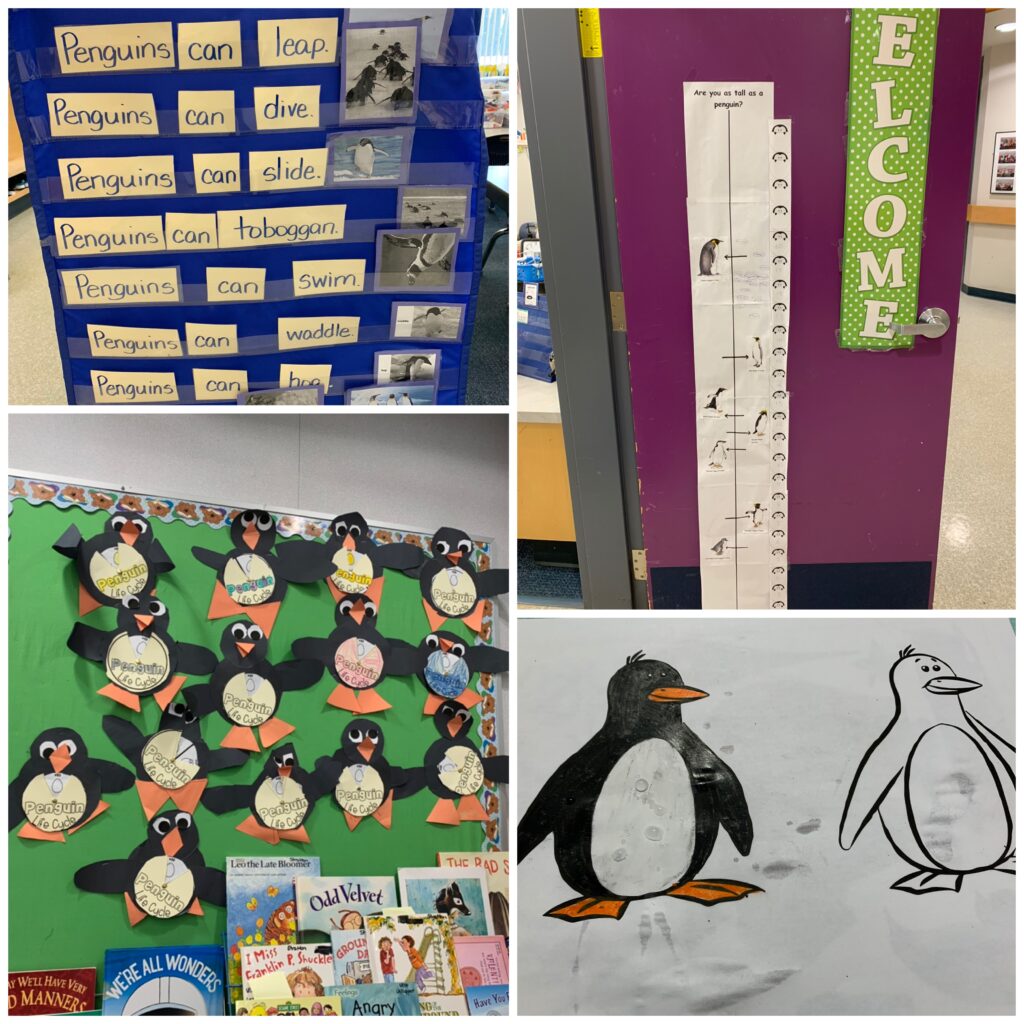
-A dance unit that was co-planned with the teacher candidate in the other Kindergarten classroom. During this unit the students learned several fun dances including the chicken dance, the bunny hop, a dinosaur dance (to go with a dinosaur unit that the other Kindergarten class was doing), and two indigenous dances. The indigenous dance that I planned was from Aboriginal DancePl3y, a company based out of Kamloops that provides dances for indigenous music. The dance included salmon and eagle movements, as well as welcoming gestures. The song we danced to was “Important to Us” by N’we Jinan Artists. This company was founded to provide indigenous youth across Canada a way to express themselves through music. The song “Important to Us” was written and sung by elementary students in Quebec. Before beginning the dance, I gave the students a bit of background information about the dance company and the N’we Jinan group, N’we Jinan means “we live here” in Cree. I also went over the three ways to say hello that are in the song. The first was French: bonjour. The second was Cree: wachiyeh. And the third was Algonquin: kwe-kwe. I connected this back to how at that school, we say Hadih when someone enters our classroom which is Dakelh for hello or welcome.
-ADST Leprechaun Traps. On St. Patrick’s Day, the students made their own Leprechaun traps. The first step to this was co-creating a list of items that would need to be included, such as some kind of bait and something to keep the leprechaun stuck in the trap. The next step was to plan the trap. All of the material available was placed around the front of the classroom. Students were given a planning page and had to walk around to look at all of the items they could use to build their trap. They then drew what they wanted their trap to look like and explained how it would work before they handed it in. After lunch, students began building their traps. Each student had a hoola-hoop to work in and where they could put their gathered supplies. They had to follow their planning sheet but were able to change or add new items as needed.
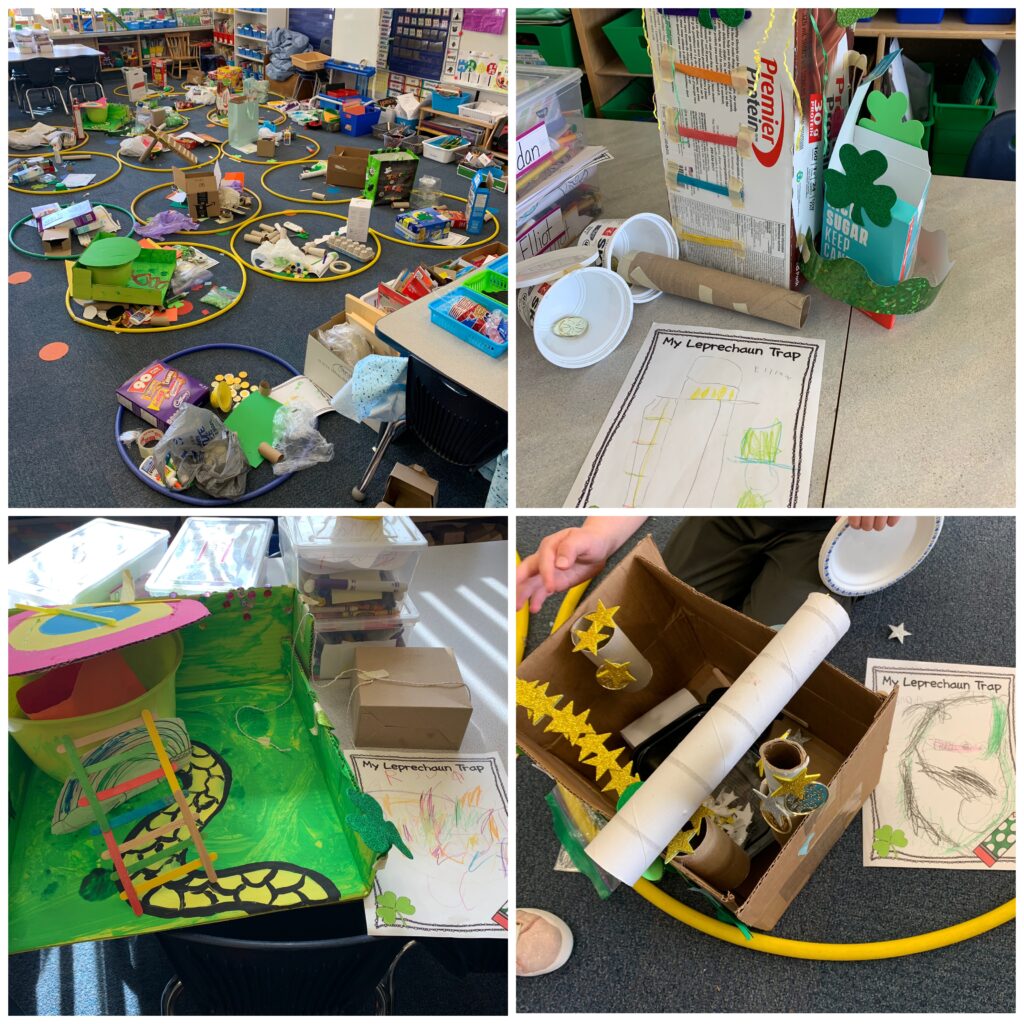
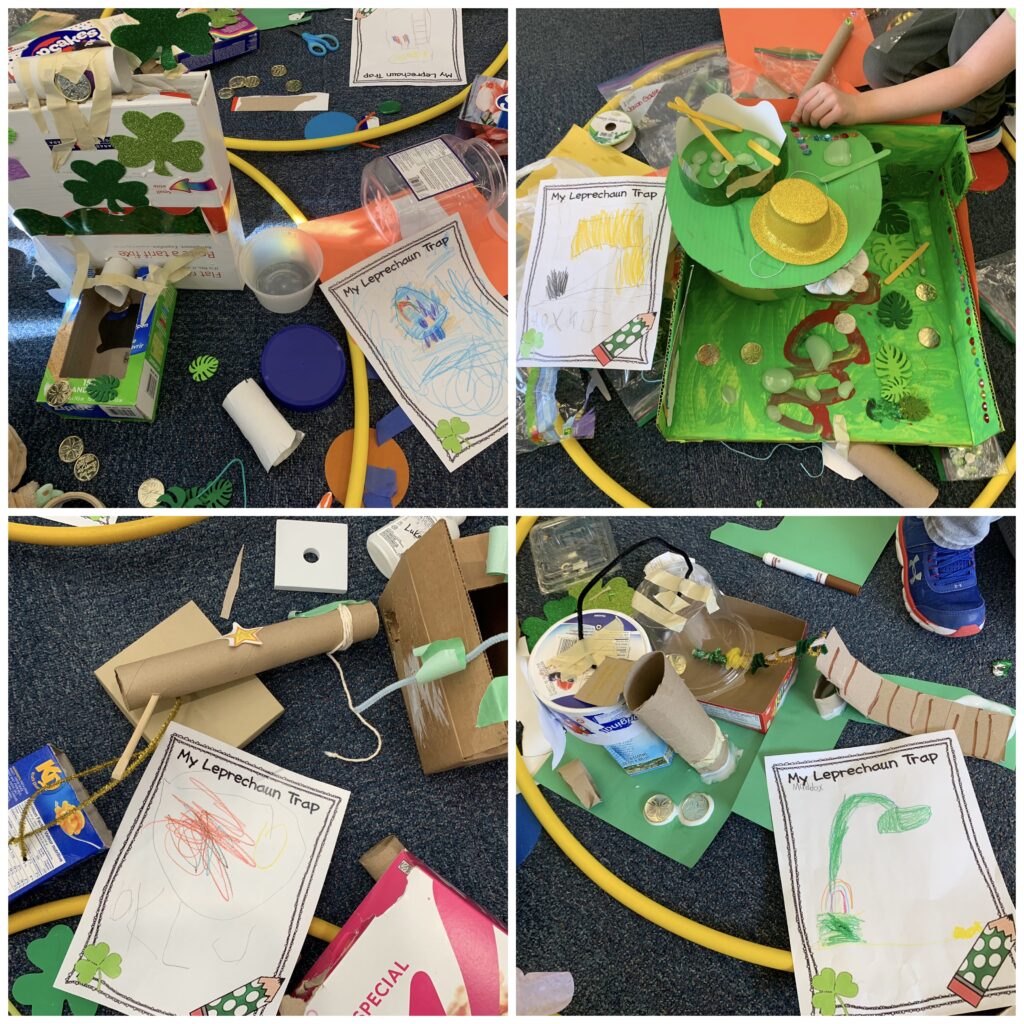
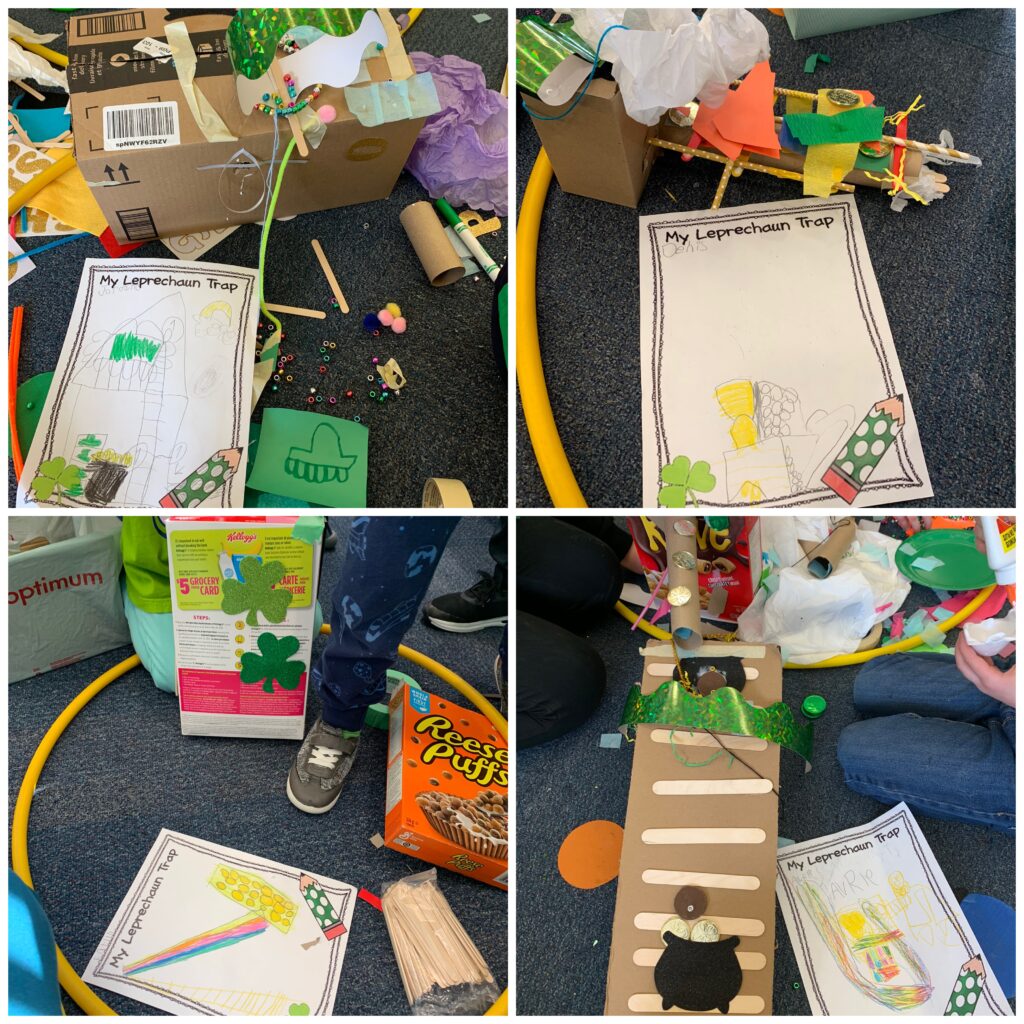
Throughout this practicum, one specific area that I worked on was my pacing and lesson instructions. All students, but specifically Kindergarten students, cannot sit for an indefinite amount of time for lesson instruction. They need to get up, move around, and do something other than listen to the teacher. During my last practicum, in a Grade 6/7 classroom, I was able to give a good 15 minutes of instructional time before sending them off to do their work. With the Kindergarteners, the instructional time needed to be short with lots of time given to complete work and to have movement breaks. One thing I brought into the classroom to break up the instructional time and keep the students active was Brain Break sticks. When I noticed the students were getting a little restless I would pull out a Brain Break stick and we would do what the stick said, such as: a scavenger hunt around the room or a freeze dance. The students really responded to these and gave them a much needed movement break.

Another thing that I focused on this practicum, carrying over from my previous practicum, was differentiation. There was one student in particular that needed a lot of differentiation in order to be successful in the classroom. This student was not able to join us at the carpet for instructional time, even if it was just for a few minutes. Instead of trying to force him to sit still and listen to the lessons, he would be allowed to sit at his table and draw or play with a fidget toy while the lesson was being given. He would still listen to the lesson and often offer comments or answer questions, but he needed to be doing something in order to focus his mind. He was absolutely allowed to come to the carpet if he chose to, and sometimes he did, but it was not required of him. The work he was given was modified to be completed in pieces rather than all at once. For example, during jobs that had multiple steps, he would do one step, then have 5 minutes of play time, then do the second step, then another 5 minutes of play time, and we would continue like that until the job was finished. The other students would complete the entire task then go to centres for play time.
The area in which I grew the most in over this practicum would be in classroom management. I learned a lot of new tricks and methods from my coaching teacher and tried a few new things of my own. This practicum helped solidify my passion for working with younger students. Though I know, after my 490 practicum, that I can and am comfortable working with older students, my heart is with the younger grades. I would love to have my own Kindergarten classroom one day.


